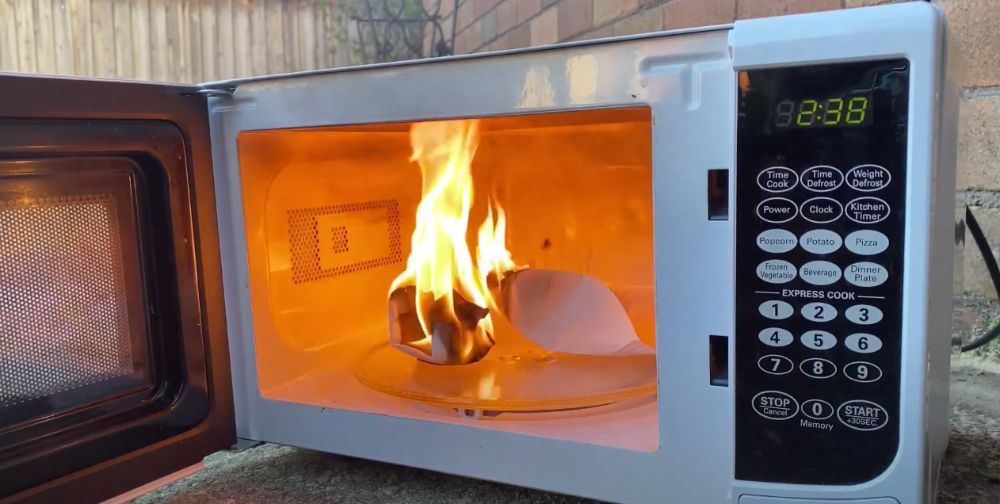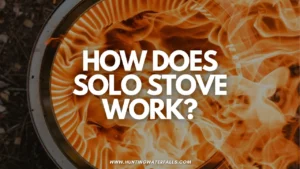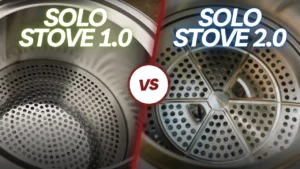While it doesn't happen often it is possible for a microwave or the food inside to completely catch on fire.
You'll want to work out exactly why your microwave caught on fire so you know whether or not your microwave is safe to use again and also so you can avoid it happening again in the future.
Microwaves catch on fire for a few main reasons. Paper or overcooked food in the microwave can combust and start a fire, electrical issues
Let’s explore the different reasons why microwaves can catch on fire, how you can prevent it, and what you can do about it if it should happen.
Sparks or Fire?
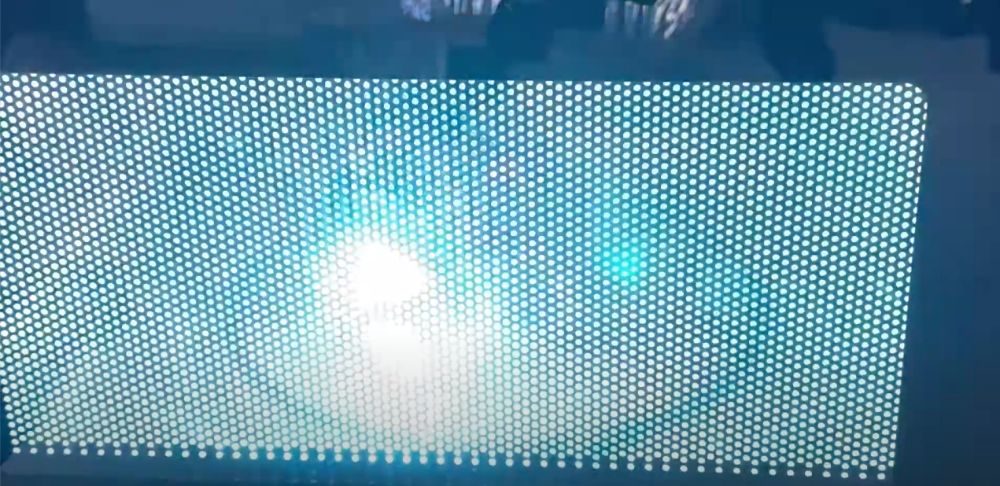
First you want to identify whether your microwave actually caught on fire or if you just had sparks inside your microwave.
You don’t necessarily have to worry if the microwave starts sparking. Sparks are usually harmless. However, if you see the sparks turning into actual flames, you’ll want to take action sooner rather than later (more on that below)!
Sparks in a microwave come from a buildup of energy often at the edges or points of metal objects in a microwave. In my experiment on microwaving aluminum foil I found that metal and foil only really creates sparks when there are sharp points. When I microwaved an aluminum tray nothing really happened.
But when you do get sparks those extra hot areas in your microwave can create plasma. Plasma is the fourth state of matter after liquids, solids, and gas. Think of it as super heated gas.
Microwave energy helps feed plasma, and that’s why you see sparks sometimes and if you leave your microwave on this plasma can grow in size and be quite intense. So if you see sparks or plasma turn your microwave off and they should disappear immediately.
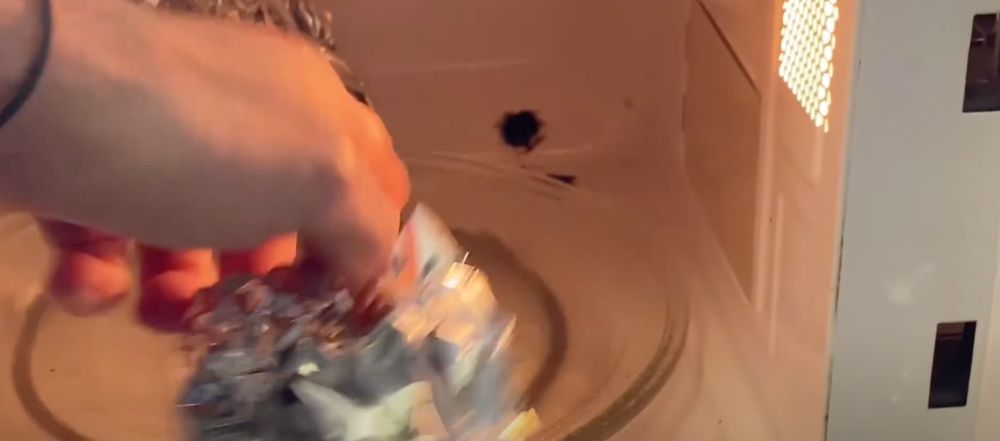
Most sparks won’t turn into fire. They can char the top of the microwave cabinet which you can't clean off easily and this makes the inside of your microwave ugly.
Given enough time they can damage the magnetron, though this is unlikely. Regardless, you shouldn’t try to make them happen just because they look cool (they do, though).
If you want to see me make sparks in my microwave check out the video below:
Things that can cause microwaves to spark include:
- Metal with pointed or uneven edges, such as a fork or a ball of crumpled aluminum foil.
- Paper towels or packaging made from recycled materials; these materials may contain tiny bits of metal that can cause sparks.
- Bowls or plates that are not marked safe for microwave use, as these may also contain metallic trim or other bits of hidden metal.
- Certain foods, including grapes. Remember above where we advised that it’s not a good idea to deliberately try to make your microwave spark? There really isn’t any good reason to be microwaving grapes; however, peas and blueberries can also create sparks and are a bit more defensible.
Food or Food Packaging
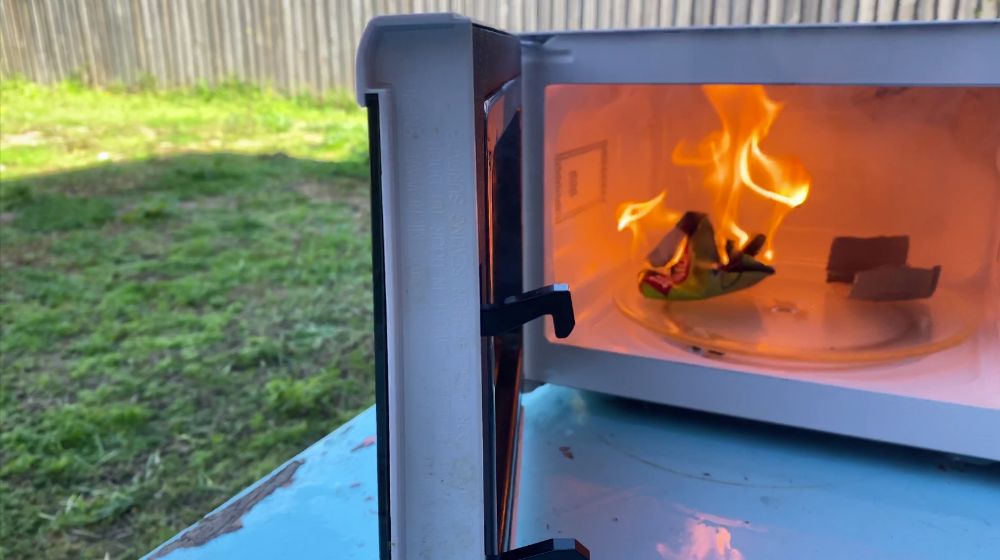
The most common culprits in actual microwave fires are overheated food and food packaging. These are also the most common causes of oven, stove, and grill fires, so this is not exclusive to microwaves.
It’s simple: if you cook your food much more than it needs to be, it will overheat, start to smoke, and smoke can turn to fire very quickly.
This can happen if you overestimate cooking time and can happen easily if you put cardboard of paper packaging in a microwave with little or no food to absorb the microwave energy.
Paper towels and other paper packaging ignite at around 480 degrees Fahrenheit (248 degrees Celsius), and microwaves can heat paper beyond that point causing it to combust into flames.
Below you can see a video of mine where an empty pizza box caught on fire in my microwave after just a little over 1 minute:
If you are microwaving something that needs a lengthy cooking time, it’s best to use microwave-safe dishes.
Other common causes of microwave fires include:
If food packaging gets stuck in place near the wave emitter or if a piece of packaging gets wedged in the corner of the cabinet, it can receive more energy than it can handle and it can catch on fire.
Residual oil that remains in the microwave after you cook greasy food may ignite the next time you use the microwave.
The leftover oil will spread out into a very thin layer that will get hot much more quickly than the new food, and that may cause it to catch on fire.
Other Causes
Food- and packaging-based microwave fires are the most common, and they are almost always caused by user error.
However, fires can also happen when the microwaves themselves are faulty or in disrepair.
If there is a short circuit in the power supply, it can burn the components in the housing and the fire can spread. This is a faulty microwave and the cable insulation or some other part of the electronics may be burning.
If this happens your microwave is broken and dangerous and shouldn't be used again.
Sometimes the magnetron (the thing that creates the microwaves in the first place) can overheat and catch on fire. However, this is extremely rare as most modern microwaves are designed to switch off when the magnetron gets too hot.
If you notice flames on the outside or in the housing of your microwave where the electronic cables are then you'll want to take immediate action.
What to Do If There Is a Fire In Your Microwave
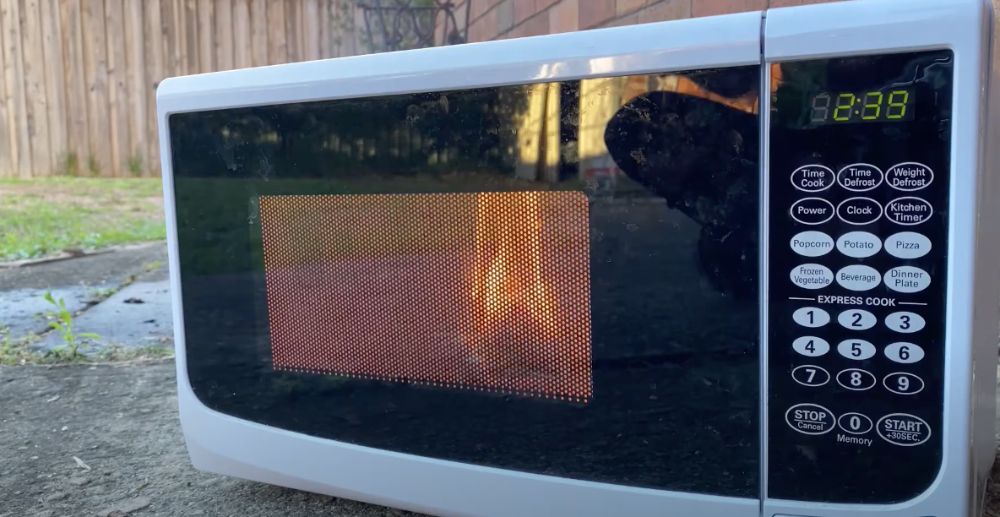
Whether it’s your fault, the microwave manufacturer’s fault, or simply one of those things that just happens, you should know what to do if your microwave does catch on fire.
If you do see flames, turn the microwave off immediately (even better if you can do this at the power source).
Microwave energy will continue to create heat and fuel the fire so you want to make sure your microwave is turned off. If it's an electrical fire then you'll want to disconnect your microwave from the wall socket.
If it's a small fire you can open the microwave door and put out the fire with water. However, if it's an oil based fire (eg. oil in food caught on fire) water isn't recommended and you should use a fire extinguisher or using baking soda or salt or even a pot or pan lid to smother the fire.
If it is the microwave itself that is on fire and not just something inside the cabinet, you can put out the fire with baking soda or a fire extinguisher.
Again, unplug the microwave at the power source if you can do so safely.
If at any point you feel that the fire is getting out of hand, call your fire department or emergency line. They are trained to deal with fires and have the proper equipment to do so safely.
Your safety is far more important than your microwave, your kitchen, or even your house.
When in doubt, get yourself and everyone in the house outside and let the professional firefighters do what they do best.
After the Fire
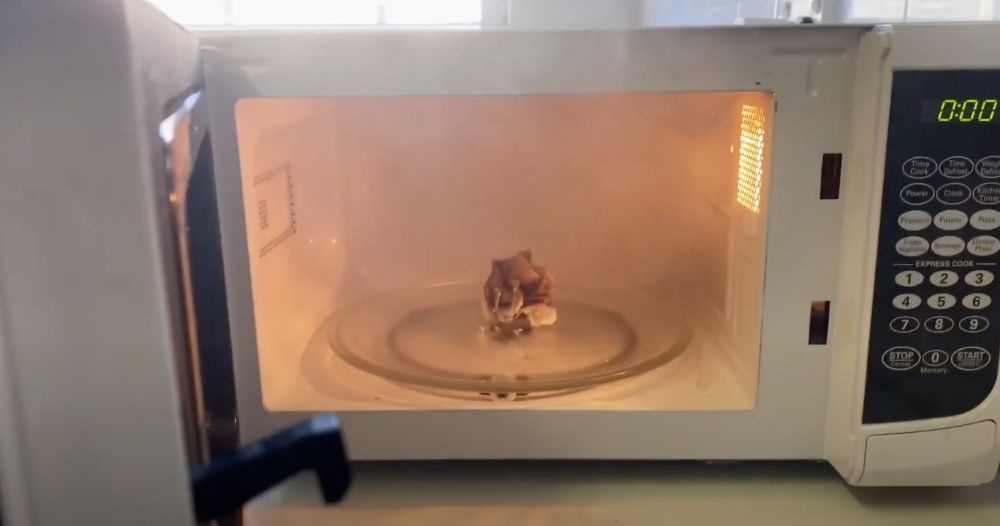
If your microwave fire was an electrical fire, you need to discard the microwave immediately. Check with your local public works department about how to do so safely.
You might also need to have the wiring in your kitchen checked by a trained and licensed electrician. The fire happened for a reason and it’s really important to fix that so it doesn’t happen again.
If the fire was caused by food or packaging and your microwave is still operable, you’ll want to clean it so that it doesn’t smell like smoke or make your food smell like smoke.
Taking your microwave outside on a sunny day and leaving it open to air out is also a good idea.
After my experiments setting fire to multiple items in my microwave it still worked fine. It still had some scorch marks on the inside but after a good clean it didn't smell anymore and still worked completely fine.
Mix a cup of water and a cup of vinegar in a microwave-safe bowl and microwave it for five minutes so that it steams out any odor or residue. You can also do this with lemon water.
Let it cool and use a soft cloth to wipe down the inside of the microwave with the solution.

